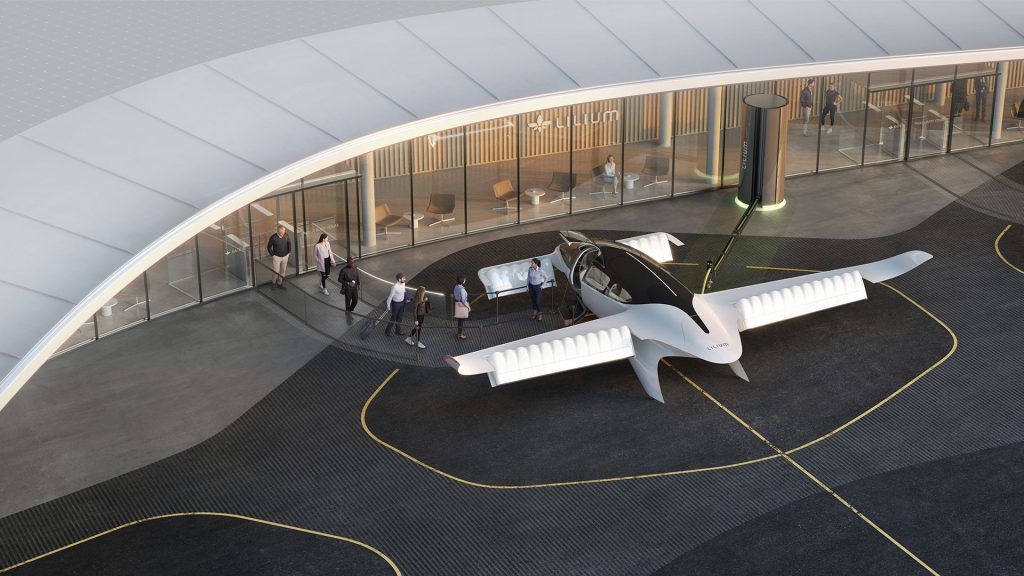
Flying cars, today referred to as electric air taxis, have been around for a long time in our dreams. Movies like “Back to the Future” or “The Fifth Element” made us fantasise about hopping into a vehicle, capable of flying and driving on the road equally, and indulging exciting journeys through future cities and landscapes.
A part of this fantasy could now become reality. Plenty of Companies, beneath them major brands such as Boeing, Toyota and Airbus, but also newer entrants like Uber, Lilium and Volocopter have taken on the race for supremacy in this future market. The goal is to link urban centres with suburbs while leapfrogging traffic. Air taxis like those of Lilium could travel at speeds of approximately 180 mph at altitudes of around 1,000 to 2,000 ft.
This new market is said to mature during this decade and then boom globally afterwards. According to a study from Morgan Stanley, the autonomous urban aircraft market may be worth $1.5 trillion. Another study by Frost & Sullivan sees urban air mobility (UAM) starting in 2022 and expanding with a compound annual growth rate of about 46% to 430.000 operating units by 2040.
At the moment it is really hard to predict who is gonna make the race, but beyond safety, regulation and cost, there are certain key factors that need to be addressed. One is the need for collaboration among different players, as autonomous air taxis are highly complex systems, that require latest technologies from aviation, automotive, telecom, software and cyber security. Additionally, collaboration with governments and other public entities is necessary, in order to implement solid regulation supporting commercial air taxi services.
What are your thoughts on the future of mobility? Do you think electric air taxis could play a significant role in transportation of goods and people? Are they providing a sustainable alternative to conventional mobility like cars, airplanes or even ships?

It seems that shortly we may have the world predicted by the visionary Sci-Fi movies from the 80s. That’s really exciting! However, the critical factor that may limit or even block the development of such travels is the negative impact on the environment. Recent, breakthrough space flights completed by Jeff Bezos and Richard Branson have been heavily criticised for the extremely high carbon footprint per passenger. Generally, it was said that this type of travelling is not a necessity when the World is facing global warming. It’s hard to say if those concerns will also apply to the air taxis, but I believe that environmental issues should also be considered. What’s your opinion?
I quite like the topic you mentioned because I am also a complete technology junkie. If I remember correctly, 2019 seems to be the year when “air taxis” emerged. People were discussing the topic of “flying cars” passionately, and more and more traditional aircraft manufacturers and startups started to invest in R&D. With the release of various concept maps and prototypes, it really gives people the illusion that such technology will soon enter our lives.
But, as far as I know, I think this technology needs to break through several key barriers until it is fully mature. First is safety. The current safety standards for helicopters and fixed-wing aircraft set by the Federal Aviation Administration are less than 1.2 fatalities per 100 million passenger miles. Therefore, in the future, more advanced assisted driving systems or fully automated driving are needed to effectively reduce accidents caused by human error.
Second, battery and flight performance. We know that even today’s best lithium-ion batteries have an energy density far lower than fossil fuels. And the purpose of achieving higher aircraft performance and flight efficiency is to achieve longer operating time and more economic benefits. Several successful cases I know are the S2 from Joby and A3 from Vahana. They effectively enhanced the flight efficiency of the aircraft through the design of rotor plus fixed wing. Overall, the flight status is very similar to the Bell Boeing V-22 Osprey (One of my favorite helicopter).
Third, maybe the most difficult one, get certifications from various national aviation administrations. Different countries may have different certification procedures for new commercial spacecraft, but they are strict without exception. Take US for example, the Federal Aviation Administration still needs time to establish new standards for new air electric vehicles that take-off and landing vertically.
But we have also seen that traditional aircraft and car manufacturers such as Boeing, Bell, and Toyota have also begun to join. Perhaps this concept that can change the mode of urban transportation can soon become a reality.
This is a very interesting topic that youve chosen Hannes!
I believe that there is most definitely a place for Air Taxis in the future. But before this becomes a reality, there will have to be a lot done in terms of readying the infrastructure required for this. Another aspect that could be further explored within this idea is that of auotonomously flying air taxis and how easier that might be to implement in comparison to autonomous cars, given that airplanes already have an autopilot feature!